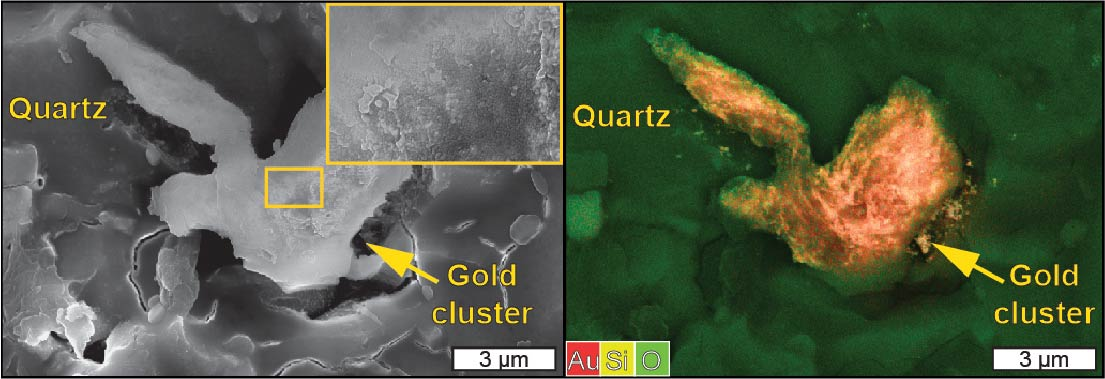Gold nuggets may be the product of earthquakes repeatedly shaking the veins of quartz, thanks to the mineral’s unusual electrical properties. The idea is hard to prove, but evidence produced in the lab shows it’s plausible, and would explain anomalies that have been glossed over for a long time.
Gold is a very rare metal in Earth’s crust, yet it is one of only seven known in its pure state to the ancients of Eurasia and Africa; one of six mentioned in the Bible. The main reason is that it sometimes forms surprisingly large and remarkably pure nuggets, alerting people to the veins that can be mined.
“The standard explanation is that gold precipitates from hot, water-rich fluids as they flow through cracks in the Earth’s crust,” said Dr Chis Voisey of Monash University in a statement. “As these fluids cool or undergo chemical changes, gold separates out and becomes trapped in quartz veins.” This isn’t just something tourist centers in gold mining districts tell the public; most geologists accept it, but there are two noticeable problems.
Firstly, why only quartz? Secondly, how do we get objects that sometimes weigh more than a person when the concentration of gold in these fluids is exceptionally low (usually less than one part in a million)? Voisey leads a team that thought the two might be related.
Quartz is by far the most common mineral that has piezoelectric properties, meaning it produces electricity when placed under stress. We’ve harnessed quartz’s capacity for watches and firelighters, but most of the time when we want piezoelectricity, we make something that suits our needs better.
The piezoelectric behavior results from the fact quartz crystals don’t have a center of symmetry, and so become electrically imbalanced when distorted by stress. The stronger the forces, the greater the electrical potential produced by this imbalance. All other common mineral crystals have a center of symmetry.
Quartz is an insulator. That means that when stress placed on the quartz builds up it has nowhere to go, unless there happens to be a conductor nearby. If there is, however, the charges can be moved.
The researchers thought this might lead to gold concentrating at a particular spot, drawn by the electrical potential. If the quartz was repeatedly stressed, as might occur in an earthquake zone, gold might build up in the veins. To test the idea, they put quartz crystals in a gold solution and shook them at a frequency similar to those common for small earthquakes.
“The results were stunning,” said Professor Andy Tomkins. “The stressed quartz not only electrochemically deposited gold onto its surface, but it also formed and accumulated gold nanoparticles.” Most crucially, Tomkins noted; “The gold had a tendency to deposit on existing gold grains rather than forming new ones.” The electrical potential flowed along the gold, making it an attractor for ions in the solution.

Left: Scanning electron microscope image of gold deposited on stressed quartz through the piezoelectric effect in experiments. The inlay shows nanoparticles grouping together. Right: Energy dispersive map of the sample.
Image Credit: Dr Chris Voisey
That doesn’t mean this is how nuggets form naturally, but it now seems the most likely explanation. The team didn’t produce large nuggets, despite using fluids richer in gold than would normally occur in nature, but of course, they didn’t have geological eons to conduct the research over. Based on their observations, the larger a piece of gold is, the more additional gold it will attract every time there is an earthquake while there is gold in a surrounding fluid.
“In essence, the quartz acts like a natural battery, with gold as the electrode, slowly accumulating more gold with each seismic event,” Voisey said.
If you want to find a nugget then, the place to look is not just in the vicinity of a quartz vein, as was already known, but one that was once exposed to many earthquakes when still surrounded by hot liquids. Voisey also suggested to ABC News that piezoelectricity could also be useful for processing gold ore when nature hasn’t created the nuggets for us.
The study is published in Nature Geoscience.
Source Link: Earthquakes And Piezoelectricity Could Trigger Gold Nugget Formation In Quartz